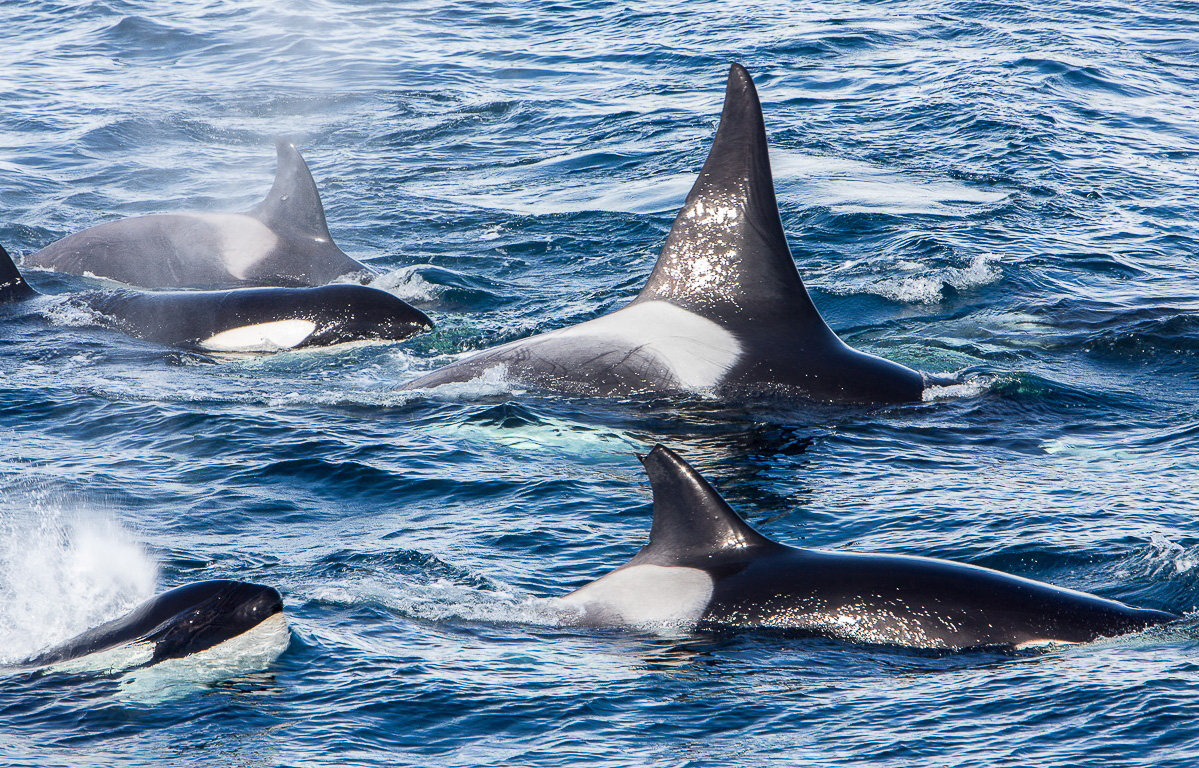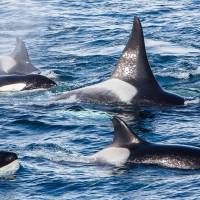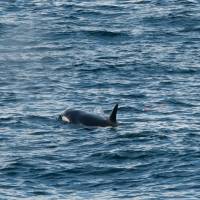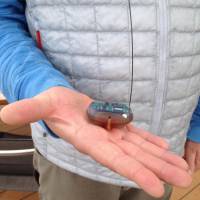In my last column of 2014, "Twelve ways to spend 2015 with nature," I mentioned the possibility of taking a whale-watching trip to the Ogasawara Islands. Ignore the international media hype about the country's pelagic whaling industry — it's a dying custom; instead, focus on the fact that Japan has a wonderful array of whale-watching opportunities up its sleeves. Commercial tourism ventures offer trips to locations scattered along more than 3,000 km of the Japanese archipelago, from Shiretoko Peninsula in northeastern Hokkaido to Zamami Island, Okinawa, in the deep south.
Whales, dolphins and porpoises regularly seen from whale-watching boats in domestic waters include humpback whales, sperm whales, Bryde's whales, minke whales, killer whales, Risso's dolphins, Pacific white-sided dolphins, spinner dolphins and Dall's porpoises. As a regular boat rider off Shiretoko Peninsula, I am always on the look out for killer whales, which are also active off Muroran in southwestern Hokkaido. If cavorting humpback whales are your thing, then the islands of Okinawa and Ogasawara offer the best opportunities.
Killer whales, also referred to as orcas, are awe-inspiring creatures. These boldly patterned mammals are top predators in their ocean realm. As someone who can count myself lucky to have watched a quartet of large feline predators — lion, tiger, leopard and jaguar — in the wild last year, I feel well qualified to say that killer whales are without doubt the most exciting predator of them all. Perhaps it's because killer whales' enigmatic lives take place mostly out of sight beneath the waves, or perhaps it's because — unlike other large predators — they are highly social and hunt prey as large or larger than themselves. For whatever reason, however, it is an inspirational species. I say species but killer whales are likely to comprise several different species, some foraging for fish, others hunting whales. Some groups are resident in nature, some are transient, and it's only thanks to modern techniques such as DNA analysis and satellite telemetry that we are finding out about the individual movements of each population as well as the relationships — or differences — between them. Researchers are currently unpicking this tangle of relationships, but seem likely to announce four or five separate, regionally distinct species of killer whale in the not-too-distant future.
You may wonder how on earth such data is collected. In early December, I had the good fortune to travel in Antarctic waters with marine biologists John Durban and Holly Fearnbach to witness data collection in action. On a stunningly eventful day, we watched in amazement as a group of killer whales gathered in Gerlache Strait to hunt Antarctic minke whales. The killer whales managed to separate a minke calf from its mother, dispatched it and then shared the meal with another group. Having spent 22 years conducting research on killer whales and other cetaceans in Antarctic waters — as well as along the U.S. West Coast and in Alaskan and Canadian waters — Durban is uniquely qualified when it comes to following these creatures. Although often elusive — and when found they frequently only show briefly or partially above the sea surface — killer whales can be photographed. It's not surprising, therefore, that high-speed digital cameras and telephoto lenses are the main tools in a modern whale researcher's arsenal. What's more, even those of us who are not scientists can contribute as well — any visitor to whale-rich waters can support ongoing research by adding their date-tagged photographs to the pool. For example, a photo database comprising 40,000 images of killer whales in Antarctic waters has been compiled from more than 250 contributors, following a cataloguing tradition that began in Canada's Vancouver region in the 1970s. Photo tagging of killer whales is also being conducted in Hokkaido, while other whales are also being catalogued elsewhere in Japan.
Photography allows researchers to identify individual animals with distinctive fin shapes, color patterns or injuries. Even during my brief stay in Gerlache Strait, I was able to recognize the same three pod members out of more than 20 animals due to their distinctive dorsal fins: One was missing the tip of the fin, one had lost most of the fin and one had a nick out of the rear edge. Each then became a useful marker in the pod they were moving with. But how does one go beyond individual recognition by photography to observing health, diving behavior, migration, diet, reproduction, maturity and even contaminant levels, especially in remote populations in remote parts of the world? The answer is technology.
The deployment of hexacopter drones now allows researchers to photograph killer whales from above. Examining these images, it's relatively easy to distinguish between those in good condition with bulging flanks and those in poor condition with sleek or concave flanks. Of even greater value than photographs are tags. These are no ordinary tags, costing between $2,500 and $4,500 depending on their purpose. The tags are attached to the animal with a crossbow and dart. The dart affixes the tag to the dorsal fin, before detaching and floating on the surface until it can be retrieved. On the day we watched the killer whales hunting the minke whale calf, Durban was able to deploy three satellite tags and also take three small biopsy samples.
Nonlethal whale research such as this, conducted by permit under the U.S. Antarctic Conservation Act, is infinitely preferable to killing animals using explosive harpoons in order to obtain data. What's more, it also allows a small team of researchers to travel lightly and cheaply by piggybacking their research onto expedition tourism. Durban and Fearnbach, for example, were being hosted by Lindblad Expeditions on board the vessel I was traveling on. Firing a crossbow and hitting a whale with a dart allows Durban to track dive depths and dive rates in order to see how long each animal spends at the surface and follow its movements. The attached tags continue to transmit data for about two months on average, though occasionally they last twice that long. Skin and blubber biopsies are also performed with a crossbow and dart. The modified dart is designed to draw a plug of skin and blubber about 5 mm wide by 2-3 cm long, which in human terms is roughly equivalent to an ear piercing. Analysis of the sample allows genetic studies of individual animals. Furthermore, analysis of stable isotopes in the sample provides information on the animal's diet, while data from the blubber reveals whether a female is pregnant or a male is mature. It's quite amazing what information can be obtained and, almost immediately, shared with fellow researchers.
While participating in cutting-edge whale research such as that being done by Durban and Fearnbach may not be practical for many of us, going whale-watching certainly is. Not only is it practical to make whale-watching trips year-round in Japan, but also it is possible to see a wide range of cetaceans. Finding out about where to go and when to go is also becoming easier, especially with the recent founding of the Japan Whale and Dolphin Watching Council (jwdc2014.wix.com/jwdc)
Here's hoping 2015 will be a whale of a good year for each and every one of you!
Mark Brazil has written "Wild Watch" for more than 30 years. He also organizes and leads wildlife, birding and photographic excursions around Japan. His latest book, "The Nature of Japan: From Dancing Cranes to Flying Fish," is available from www.japannatureguides.com or from the Junkudo Ikebukuro bookshop in Tokyo.





















With your current subscription plan you can comment on stories. However, before writing your first comment, please create a display name in the Profile section of your subscriber account page.